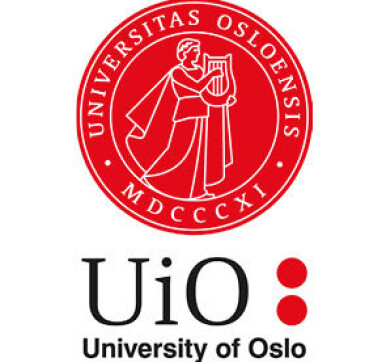THIS ARTICLE/PRESS RELEASE IS PAID FOR AND PRESENTED BY University of Oslo - read more

Fierce competition between manufacturers of antibiotics in China and India
"The market has become concentrated," researcher says.
Over the past 20 years, competition among Chinese and Indian manufacturers of key ingredients used to make antibiotic medicines has intensified, resulting in trade disputes and anti-dumping investigations.
“The market has become concentrated, with the majority of the leading antibiotic ingredient producers being located in China. Many Indian producers of antibiotic ingredients have closed down their manufacturing as they have been unable to compete with Chinese producers,” Lise Bjerke says.
She is a PhD student at the Department of Community Medicine and Global Health at the University of Oslo.
India accuses China of dumping
“Indian producers have been accusing Chinese producers of dumping antibiotic ingredients into the Indian market, selling ingredients at unreasonably low prices, and creating unfair competition,” Mingyuan Zhang explains.
She is a postdoctoral fellow at the same department as Bjerke.
Dumping is a term used in international trade, within the World Trade Organization (WTO) framework. It describes a situation where a manufacturer exports a product to another country at a lower-than-normal price, causing price discrimination, unfair competition, and damage to local production.
“Cheap labour and infrastructure in China make the price of antibiotic ingredients lower than the producing cost if they were produced in other countries, making it possible to export ingredients at a very low price,” Zhang says.
Disputes provide space for communication and debate
China and India are major producers of antibiotics today. The world is highly dependent on importing antibiotics and antibiotic ingredients from both countries.
China is the main producer of active antibiotic ingredients. India is the leading producer of antibiotics globally, but is highly dependent on Chinese ingredients to produce these medicines.
“In the new study, we unpack the relationships and trade disputes within the antibiotic trade between the two countries, as these relations are essential for the global supply of antibiotics,” Bjerke says.
“Analysing trade disputes between China and India, we found that the disputes provide a space for communication and debate,” Zhang says.
She explains that stakeholders of conflicting interests from both countries used, or sometimes even manipulated, objective facts about pharmaceutical ingredients, to strengthen arguments on both sides of the disputes.
Interests are intertwined
According to the study, China and India’s interests in antibiotic trade are extremely entangled.
“Even though they were trying to separate themselves from each other due to nationalistic and corporate interests, they were dealing with intertwined and connected issues within the antibiotic trade,” Zhang says.
Often there was not a clear division between the countries and their interests. Multiple stakeholders with conflicting interests from both countries were involved throughout the antibiotic supply chains.
“This makes it hard to track the flow and monitor the antibiotics and pharmaceutical ingredients being produced,” Zhang explains.
Analysed reports
“During the pandemic, I could not do in-person fieldwork or interviews with professionals from the pharmaceutical industry in China. I had to find alternative methods to study antibiotic production and trade,” Zhang says.
Together with Bjerke, Zhang came across reports from anti-dumping investigations conducted by the Indian government. The reports were public, in English, and had never been used in previous research.
“When studying antibiotics trade, it is often hard to identify or get in touch with central actors in the field and get access to information,” Bjerke says.
By analysing the reports, Zhang and Bjerke were able to map out some of the main stakeholders, and their roles in the antibiotic trade disputes between India and China.
“In the reports, we found a lot of information about the actors involved in antibiotic production, what and how much they produced, which trade disputes they were involved in, and what the disputes were about,” Zhang says.
Researchers conducted digital fieldwork at international trade fairs
“Recognising ethnographic fieldwork as the key anthropological method of the discipline, we however show that anthropologists can rely on alternative methods beyond in-person fieldwork or interviews, which were difficult to conduct during the pandemic,” Zhang says.
In addition to the reports, Zhang and Bjerke analysed articles from Indian and Chinese news media. Zhang also conducted digital fieldwork by attending online pharmaceutical trade fairs. Bjerke conducted six months of fieldwork in India in 2022, interviewing professionals from pharmaceutical companies.
The online trade fairs were open to the public, and at the fairs, international trade professionals gave talks, speaking openly about challenges and disputes within the antibiotic trade.
“I even came across an Indian CEO at one of the fairs, who was talking about antibiotic trade disputes with China. His company was leading one of the trade disputes described in the anti-dumping reports. This gave us a coherent story, and we could connect the dots across our data material,” Zhang says.
Reference:
Zhang, M. & Bjerke, L. Antibiotics «dumped»: Negotiating Pharmaceutical Identities, Properties, and Interests in China–India Trade Disputes, Medical Anthropology Quarterly, 2023.

This article/press release is paid for and presented by the University of Oslo
This content is created by the University of Oslo's communication staff, who use this platform to communicate science and share results from research with the public. The University of Oslo is one of more than 80 owners of ScienceNorway.no. Read more here.
See more content from the University of Oslo:
-
Queer opera singers: “I was too feminine, too ‘gay.’ I heard that on opera stages in both Asia and Europe”
-
Putin’s dream of the perfect family
-
How international standards are transforming the world
-
A researcher has listened to 480 versions of Hitler's favourite music. This is what he found
-
Researcher: "AI weakens our judgement"
-
New, worrying trend among incels, according to researcher





































